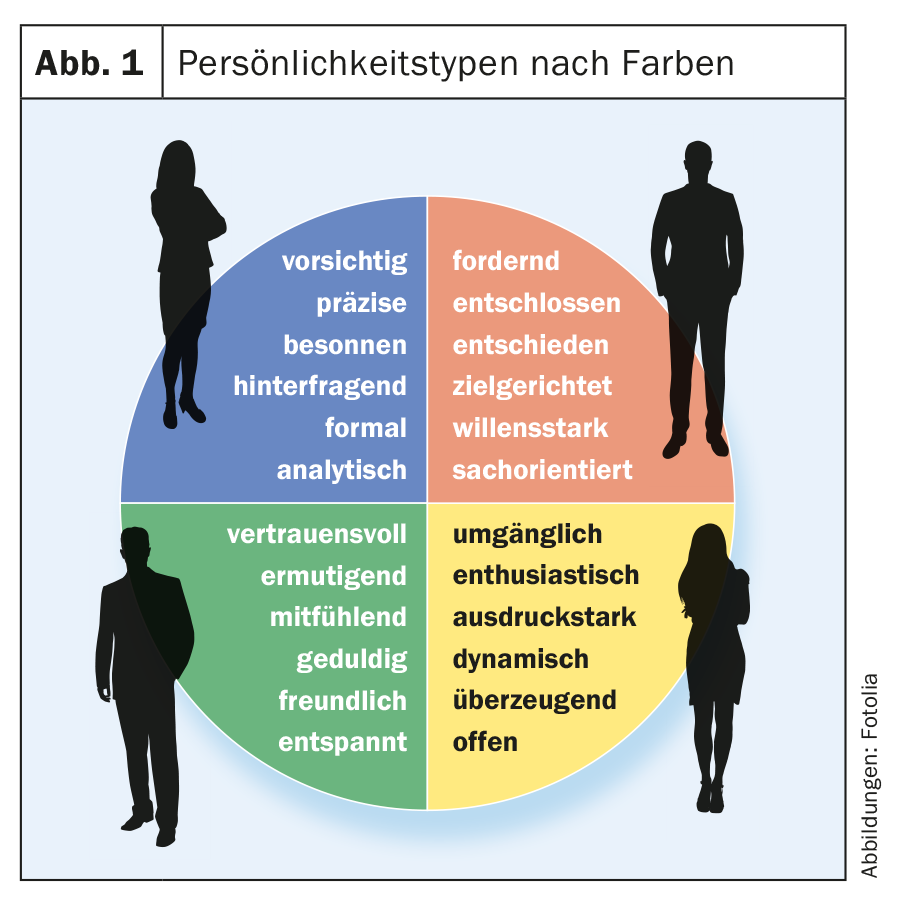Knowing what makes the other person tick makes the difference between success and failure in communication. This applies to both employees and patients. The four-color type model helps with orientation.
Do you sometimes have the impression that communication with certain people works right away, while it doesn’t really get off the ground with others? Psychologically, this is because there are different personality types, which in turn bring different behaviors. A common method of estimating types is the four-color type model. A distinction is made between red, green, blue and yellow and different characteristics and properties are assigned to each color (Fig. 1).

Color personalities
The red doer likes to be the center of attention and take the lead. He stands out, is extroverted and easily asserts himself. He processes information through conversations with others and often appears enthusiastic and adventurous.
The green supporter, on the other hand, likes things harmonious and places a lot of value on trust. He is a gut person and acts rather intuitively, which makes him an empathetic, patient, reliable and helpful fellow. The fact that he likes to please everyone is both an opportunity and a danger.
The blue thinker seems rather aloof and wants to handle everything correctly and objectively. He acts conscientiously and, as an introverted head person, loves details and facts. Accordingly, he is characterized by a precise, formal and analytical way of working, whereby he makes decisions rationally and ignores emotions.
The yellow sunshine has many ideas and likes to exchange. Like the green type, he is a gut person who likes to act spontaneously. He shows initiative, is cheerful, sometimes even enthusiastic, dynamic and convincing.

In practice, however, there are not only these four types. Rather, mixed types are also frequently encountered. In everyday practice, a person can live out a red, assertive part, while in family life he or she adapts strongly (green part). Similarly, there are people who are very precise and analytical in their financial affairs in private (blue portion), while they trust their feelings at work (yellow portion). It is important to classify people and their behavior in order to shape interactions.
HAUSARZT PRAXIS 2019; 14(3): 7











